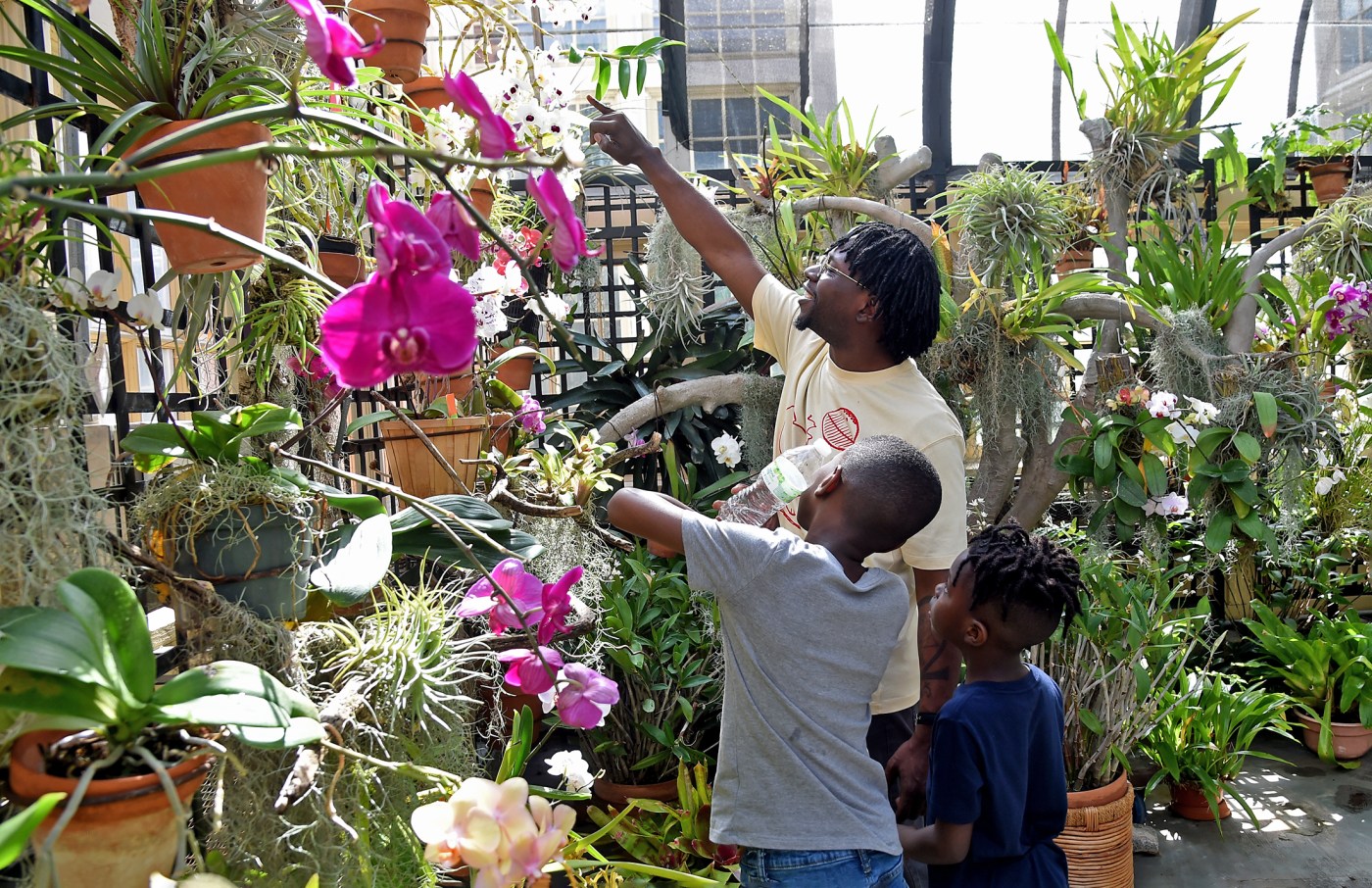
[Baltimore Sun] Rawlings Conservatory: ‘full of sunshine and flowers even in the rain’ | GUEST COMMENTARY
What in Baltimore is made of glass and cast iron, opened in 1888, and has two palm trees growing through its roof? Where in Baltimore can you immerse yourself in the South Pacific, the Sonoran Desert, the African savannah or the Mediterranean without virtual reality or catching a flight? The answer — the Howard P. Rawlings Conservatory, named in honor of longtime legislator Howard “Pete” Rawlings. Conveniently located in Druid Hill Park, near the Maryland Zoo in Baltimore, the conservatory serves up one wonder after another. On a recent inclement weather day visit, the greenhouse supervisor, said, the conservatory is “full of sunshine and flowers even in the rain.”
Abbott Kenney, one of the conservatory founders, traveled to London in the late 1870s to study Kew Gardens, which served as inspiration for Baltimore’s conservatory, which is now the second-old glass and cast-iron building in the United States. The Palm House was the first structure built on the site. It has been so successful that wealthy Longwood Gardens in Pennsylvania donated a Bismarck Palm. Two of the palms currently in residence have so loved the conservatory that they have pushed out some of the glass panels in the cupola ceiling. Since the doors of the Palm House are 8 feet tall at the most, and the palms exceed 50 feet, the curators are facing a conundrum. Unfortunately, if the top of a palm tree (known as the crownshaft) is cut off, the whole tree dies because palms cannot regenerate a new growing tip.
The conservatory now includes Mediterranean, Tropical, Orchid and Desert sections as well as a koi pond and, on a recent visit, a massive display of forced bulbs that could be smelled from the street. Until a 2002-2004 renovation most of the climate controls, separate for each area, were about 120 years old. Ductwork, vents and the ability to open and close parts of the glass ceiling allow curators to maintain the Desert House between 50 and 90 degrees and the adjacent Tropical room at 72 degrees. The Orchid collection exceeds 3,000 specimens. One staffer’s job is to constantly rotate the orchids: He takes the ones finished blooming to nearby Cylburn Arboretum and restocks with those in — or about to — bloom. Like trying to get Colt’s season tickets in the old days, this job is hard to come by. Legend has it that the position is only filled upon the death of the current occupant.
One other non-native species flourishes in the conservatory: the European Starling. Brought to America by Shakespeare devotees who wanted every bird he mentioned to be found here, the starlings clawed their way through gaps in the ceiling. Every spring, fledglings are seen walking along the garden pathways as they figure out how to fly.
These pathways are not only training grounds for baby birds, but they are wide enough for stroller and wheelchair access. There is a large grassy area outside the building, ideal for frisbee and picnics. Admission is free (although a modest donation is requested) as is parking. This jewel deserves your affection. Who could not use the chance, amid so much troubling news, to break away among the flowers?
Carl R. Gold ([email protected]; Instagram: @crgkoko) is a Maryland Master Naturalist.
